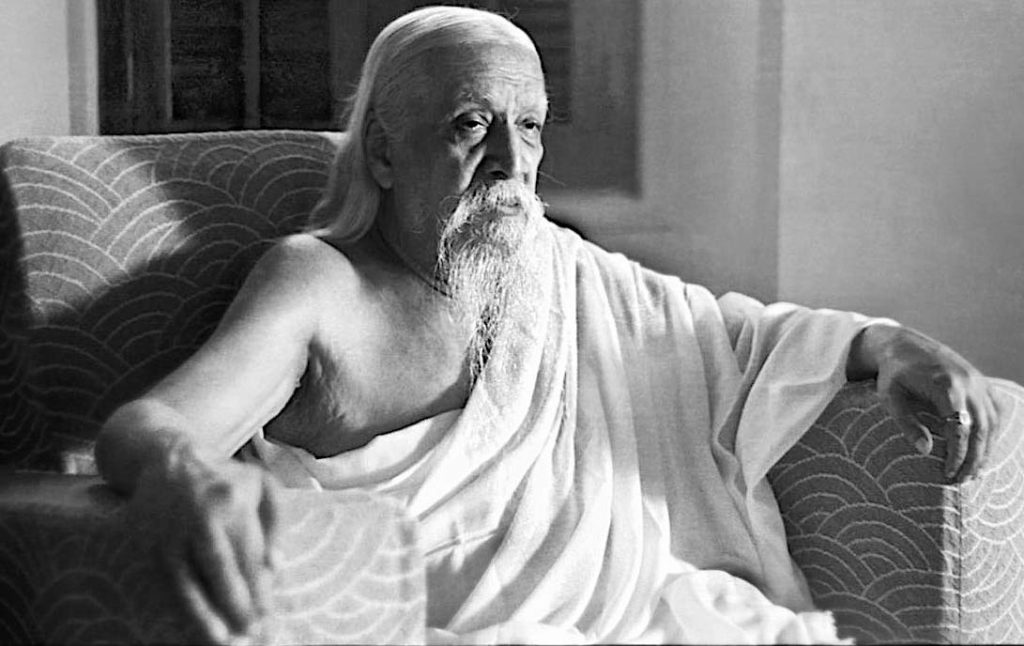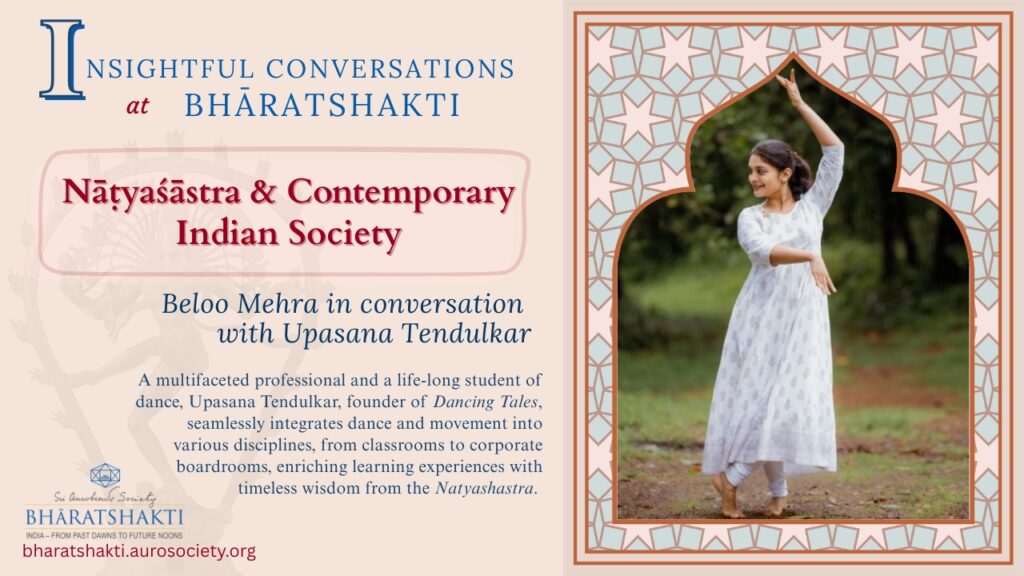Volume VI, Issue 4
Author: Sisirkumar Ghose
Editor’s Note: This essay was first published in the 1968 issue of Sri Aurobindo Circle, a journal published annually by Sri Aurobindo Society. We shall feature the full essay in three parts over the next few issues. In part 1, the author emphasises that Sri Aurobindo has not merely theorised about the deeply subjective and spiritual tradition of Indian aesthetics, but through his spiritual poetry he has actually renewed this sanatana tradition and made it a living truth for the modern sensibility.

Talking about the uncritical critics of Indian art, or Indian values in art, Sri Aurobindo had written:
“But everyone who has at all the Indian spirit and feeling, can at least give some account of the main, the central things which constitute for him the appeal of Indian painting, sculpture and architecture. This is all that I shall attempt, for it will be in itself the best defence and justification of Indian culture on its side of aesthetic significance.” (CWSA, Vol. 20, p. 261)
As part of this modest attempt to “give some account of the main, the central things” he wrote The Significance of Indian Art. Brief but characteristic, it contains the pith of his argument, and will interest and profit anyone who cares for the higher values of life. But here we shall not speak of his work as expositor.
Re-affirming the Indian or Spiritual Tradition in Aesthetics
Sri Aurobindo has done something even more important, sent the roots rain, made the archetypal awareness live again. Along with his other creative works, in his later poetry especially, he has re-affirmed the basic Indian or spiritual tradition in aesthetics, and renewed that possibility once again. Nothing short of bringing back the new-old way of beholding, of a subjective interpretation of the self and the world, it is to this creative aspect of his works, a poetic, experiential restatement of the ancient (or is it perennial?) experience, the Great Tradition, that I wish to draw your attention.
I shall, therefore, pass over other attempts at interpreting Indian aesthetic attitude and achievement. These are no doubt valid and include the work of eminent men like Ananda Commaraswamy, Abanindranath and Rabindranath. And how can we forget such sympathetic outsiders as Fergusson, Havell, Zimmer, Codrington, Rowlands and others?
There are also the scholarly, sometimes comparative, studies of the texts and principles of aesthetics, of different ages and schools, by Kane, De, Hiriyana, Dasgupta, Raghavan, Pandey, Chaudhury, Krishnamoorthy and others. Much as we owe to these histories, translations, explications, they operate, as a rule, on the circumference rather than at the centre. What the critics write, or wrangle, about and about, Sri Aurobindo’s poetry is, the thing- in-itself.
Only an artist-thinker, with similar outlook, intensity and poised serenity, the “calm strength” of the old Masters which he valued so much, could do that. This is where Sri Aurobindo, mystic and poet, triumphs over others. He breathes life into dogmatics. As Claudel had said of Rimbaud, he becomes almost an argument for a return to faith. In Sri Aurobindo’s case it is not merely a return but a prelude to going forward, an invitation to fresh embodiment. He makes it new.

The Aesthetics of Creative Harmony
Sri Aurobindo’s rootedness does not make a fetish of the forms of the past. That way he is not a conservative but a sanatana. What would else have remained bloodless categories, dry-as-dust exposition, or at best an exercise in nostalgia, in his hands they come alive and reveal “the rhythmic sense of hidden things”. This the modern world has all but lost. It is precisely here that Sri Aurobindo’s significance stands out so clearly, as a giver of life. In these poems he does not so much theorise as actualise, “realize”.
He communicates a “state of consciousness in its concrete actuality”, and the state of consciousness is not confined to any one sect or tradition or aspect. It is large enough to contain all variations, the entire spectrum. Integral and inclusive, its value to the future, to the enlarging experience of the race, is or could be immense.
Aesthetics, the aesthetics of creative harmony, is of the essence of the Indian as of the Aurobindean world-view or life-world, Lebenswelt. Even his ideal of a spiritual life and society reveals aesthetic overtones. One is not surprised to find him saying towards the end of The Life Divine:
“The delight of the Spirit is ever new, the forms of beauty it takes innumerable, its godhead ever young and the taste of delight, rasa, of the Infinite eternal and inexhaustible. The gnostic manifestation of life would be more full and fruitful and its interest more vivid than the creative interest of the Ignorance; it would be a greater and happier constant miracle.” (CWSA, Vol. 22, pp. 1106-1107)
In this absolute, aesthetic, Aurobindean view:
Beauty is his footprint showing us where he has passed…
A communion of spiritual entities,
A genius of creative immanence
Makes all creation deeply intimate:
A fourth dimension of aesthetic sense
Where all is in ourselves, ourselves in all,
To the cosmic wideness re-aligns our souls.~ Savitri, CWSA, Vol. 33, p.112

In this view, that is in terms of this experience, beauty is a key to the supreme, a communion of “moved identity”: Where all is in ourselves, ourselves in all. It reveals the aesthetic roots of our Being, justifies the world as an aesthetic experience. It is the highest reward, the equation of Brahmasvada and Rasasvada.
Behind the multiple, mutable forms that arise only to vanish, the sometimes beautiful objects, there stands a changeless Essence, an Essence that can be nothing other than the Bliss of Self. Out of this has come all creation and towards it all things move, the Super-Nature behind the Nature we see. In the poet’s own expressive words in Bliss of Identity:
All Nature is taught in radiant ways to move,
All beings are in myself embraced.
O fiery boundless Heart of joy and love,
How art thou beating in a mortal’s breast!It is Thy rapture flaming through my nerves
And all my cells and atoms thrill with Thee;
My body Thy vessel is and only serves
As a living wine-cup of Thy ecstasy.I am a centre of Thy golden light
And I its vast and vague circumference;
Thou art my soul great, luminous and white
And Thine my mind and will and glowing sense.Thy spirit’s infinite breath I feel in me;
My life is a throb of Thy eternity.

From Delight All Things Are Born
Ancient Indian wisdom, with its objective correlative, aesthetics, was based on nothing so much as the deathless doctrine or seed-idea of Ananda, or the principle of Bliss or Delight as the matrix of manifestation. In the well-known words of the Taittiriya Upanishad: ānandādhyeva khalvimāni bhūtāni jāyante| ānandena jātāni jīvanti | ānandaṁ prayantyabhisaṁviśantīti, ‘From Delight all things are born, by Delight they exist and grow, to Delight they return.’
Again: yato vāco nivartante | aprāpya manasā saha| ānandaṁ brahmaṇo vidvān|, ‘The delight of the Eternal from which words turn away without attaining and the mind also returns baffled, who knows the delight of the Eternal?’ The answer is, the poets and mystics do, as much as is possible. Without them we would have no reason to speak or suspect of these things, the aesthetics of the spirit. In The Bliss of Brahman we hear:
I am swallowed in a foam-white sea of bliss,
I am a curving wave of God’s delight,
A shapeless flow of happy passionate light,
A whirlpool of the streams of Paradise.
I am a cup of His felicities,
A thunderblast of His golden ecstasy’s might,
A fire of joy upon creation’s height;
I am His rapture’s wonderful abyss.I am drunken with the glory of the Lord,
I am vanquished by the beauty of the Unborn;
I have looked alive on the Eternal’s face.
My mind is cloven by His radiant sword,
My heart by His beatific touch is torn,
My life is a meteor-dust of His flaming Grace.
The Secret of Earthly Perfection
And “since infinite Beauty seeks for form”, the world is not wished away as an unreality or illusion. On the contrary, we learn the secret of earthly perfection:
To seize the absolute in shapes that pass,
To feel the eternal’s touch in time-made things,
That is the law of all perfection here.~ Savitri, CWSA, Vol. 33, p. 108
Continued in Part 2
~ Design: Beloo Mehra



